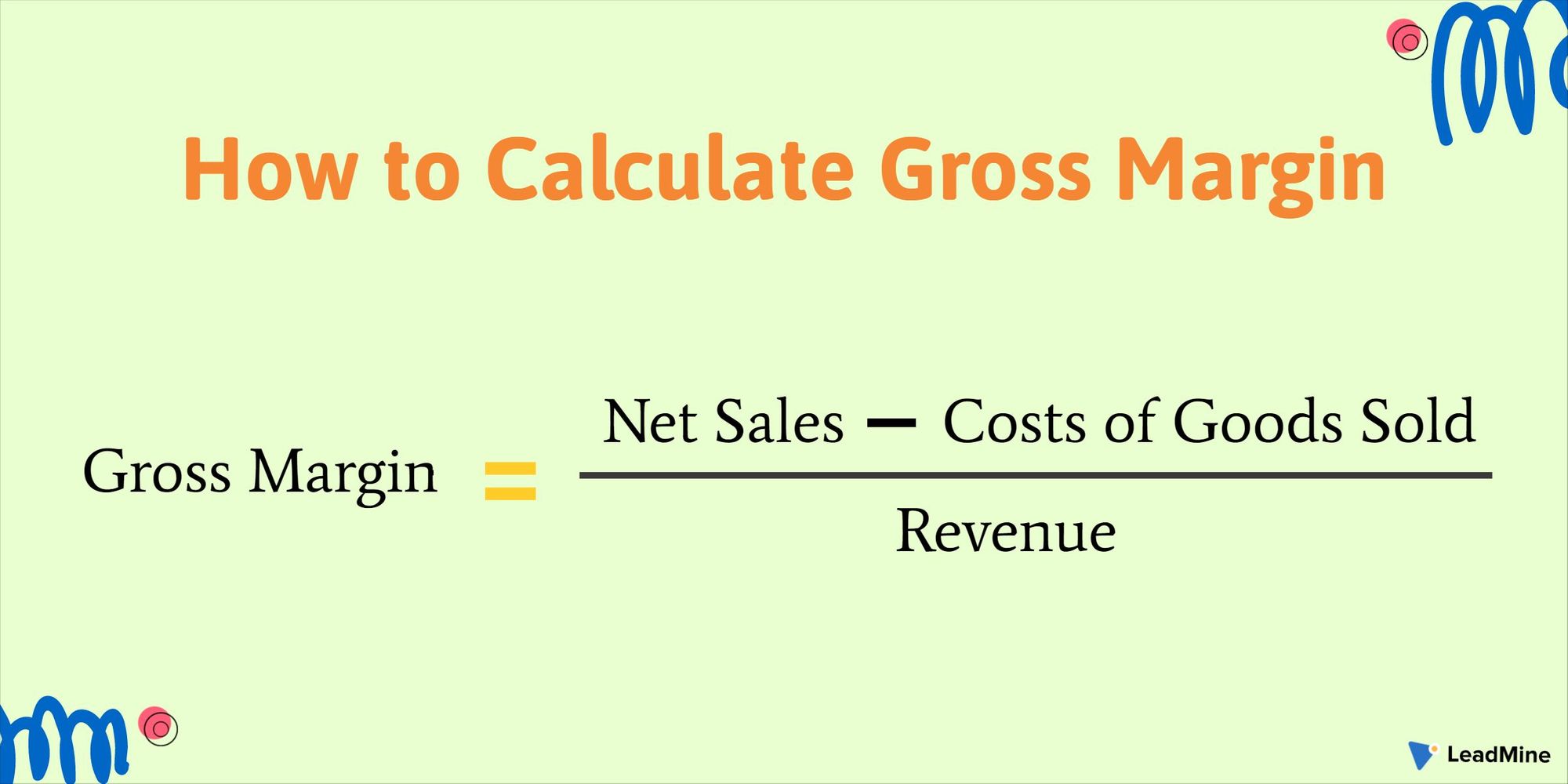Financial metrics measure profitability, and they indicate a company’s financial health and whether it is trending upward, or downward. Gross margin is one of the financial metrics that business owners should be tracking to calculate a company’s income statement.
We will go over the following:
- What is Gross Margin?
- The formula for Gross Margin
- Why Gross Margin is Important?
- How to Increase the Gross Margin Percentage?
- Profit Margin vs Gross Margin
- Summary
What is Gross Margin? 😖
Gross margin is expressed as a percentage and calculated as the selling price of an item, less the cost of goods sold then divided by the same selling price. The difference between sales and cost of goods sold (COGS), divided by revenue, is how the gross margin been calculated. The term gross margin is often interchangeably with gross profit, although the terms are different.
Gross profit is an absolute monetary amount while gross margin is technically a percentage or ratio.
Gross margin is a valuable financial measurement to company managers as well as company investors since it indicates the efficiency with which the business can produce and sell one or more products before extraneous costs are deducted. It is based on the company’s cost of goods sold and can be compared to the operating margin and net margin.
In other words, it is the amount of sales revenue a business keeps after covering the direct costs of making the products and services it offers. The higher the gross margin, the more money a corporation keeps from each dollar in revenue, which it can use to cover its expenses or pay off debt. Returns, refunds, and discounts are subtracted from gross revenue to arrive at the net sales figure.
The formula for Gross Margin 😵
Gross margin is a type of profit margin that is calculated by dividing profit by net revenue. The formula for the gross margin is:
Gross Margin = Net Sales – Costs of Goods Sold / Revenue
Your net sales show how much revenue your business makes after deducting things like discounts, returns, and allowances from your profits. To find net sales, subtract deductions from your gross sales.
The cost of goods sold refers to the price of producing your goods or services. It includes things like direct materials and direct labour expenses. To measure your cost of goods sold, add your beginning inventory and purchases during the period together. Then subtract your ending inventory.

The higher your gross profit is, the more effective the company is at generating its products and services.
Why Gross Margin is Important? 🤔
Gross margin will tell you a variety of things. It can show you that your cost of goods sold is too high, pricing is too low, or offerings need an update or change. Many companies fail to recognize the significance of their gross margin, including start-ups that don’t have as much financial experience.
Calculating your company’s gross margin can help you evaluate profitability, save money, and determine your break-even point. Analysing your company’s gross margin is essential in assessing your profitability. Measuring gross margin lets you see how much profit you earn when you add in the cost of products sold.
Without your gross margin, you can’t able to know how profitable your business is and whether or not you need to make adjustments to prices or direct costs. If you want to save money, look at the gross margin. As you saw, you can measure gross margin on a per-product basis.
Calculating gross margin can show you if you are spending too much time or labour on a certain product or service. Knowing your gross margin will assist you in making decisions that will lower your costs and increase your income over time.
How to Increase the Gross Margin Percentage? 🤥
The gross margin measures how profitably a company can sell its product or service. A higher percentage is more favourable and the better off your business will be.
Gross margin may vary from business to business and can also vary depending on your industry and they are generally lower for start-ups. If you increase your gross margin then you can increase prices, reduce direct cost, reduce inventory waste, adjust your offerings, and add new services or products.
There are usually two steps to increase the gross margins:
Step 1: Buy Inventory at a Cheaper Price
If companies can get a large purchase discount when they purchase inventory or find a less expensive supplier then their percentage will become higher because the cost of goods sold will be lower.
Step 2: Mark Up Goods
Selling goods at a higher price would result in a higher percentage. Although, this must be done competitively or the goods would be too expensive and fewer customers would purchase from the company.
Profit Margin vs Gross Margin 🥊
Profit margin and gross margin are profitable percentages used to assess the financial health of a company. Both commonly known as net profit margin used to measure the profitability of a company as compared to the revenue generated for a period. Both are expressed in percentage terms but have distinct differences between them.
Profit margin is the bottom line of a company in percentage terms and is the ultimate measure of the profitability of a company while gross margin provides an indication of how effectively a business produces its products within a given cost.
Profit margin is calculated by deducting from the gross profit operating expenses and any other expenses such as debt while gross margin is calculated by subtracting the costs of production, such as parts and packaging, from the sales.
Profit margin also known as net profit margin measures how efficiently management has generated profit. It is a measure of how much profit is generated by a company’s sales and based on net profit, or how much a company makes after accounting for operating expenses. While gross margin measures how efficiently management uses its production costs to make a company’s products or services.
Summary
Gross margin is a financial percentage used by managers to evaluate the quality of the manufacturing process for a single product or several products produced by the company. A company may be more efficient at producing and selling one product than another. The gross margin can be calculated for each individual product as long as the company can differentiate the direct costs of producing and each product from the others.
Share your thoughts about Gross Margin with us at LeadMine.





